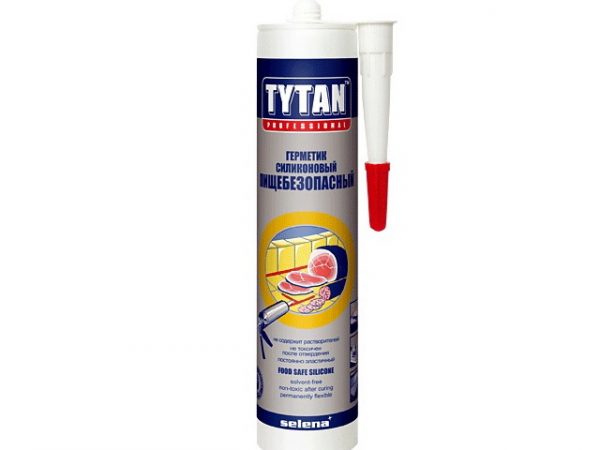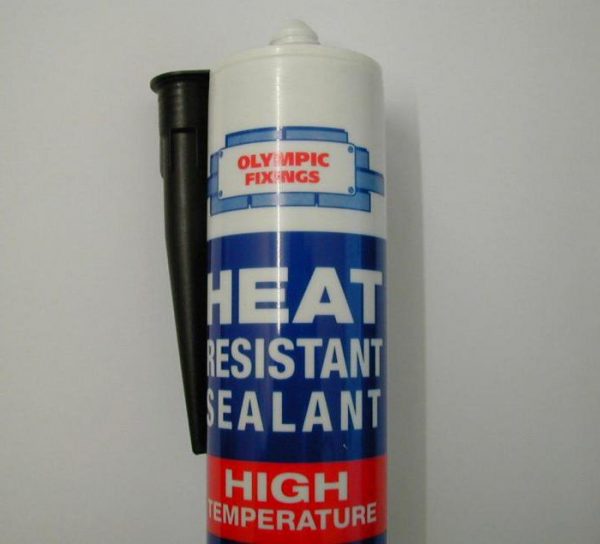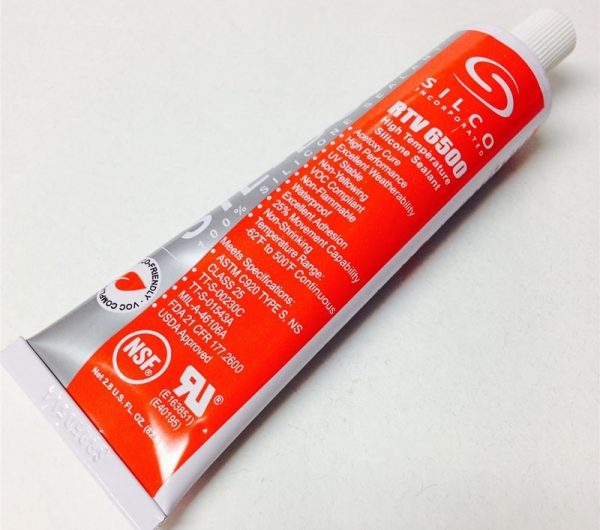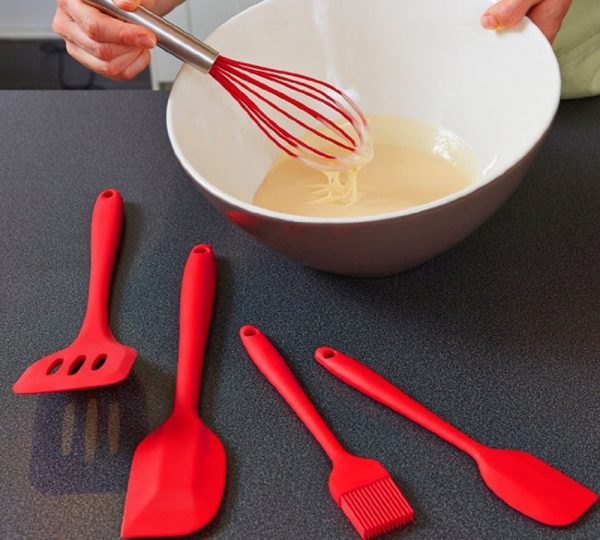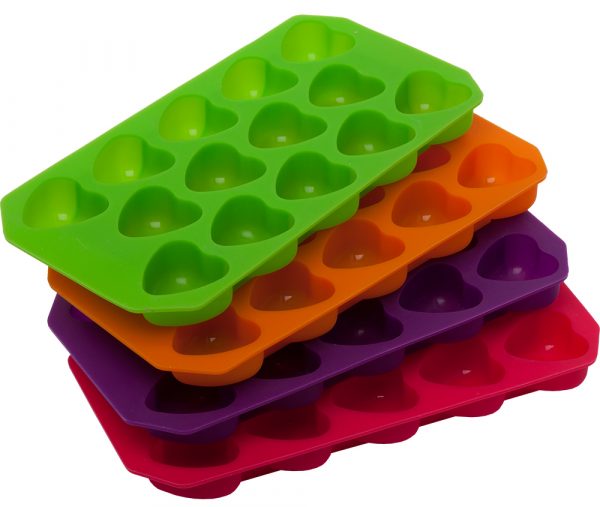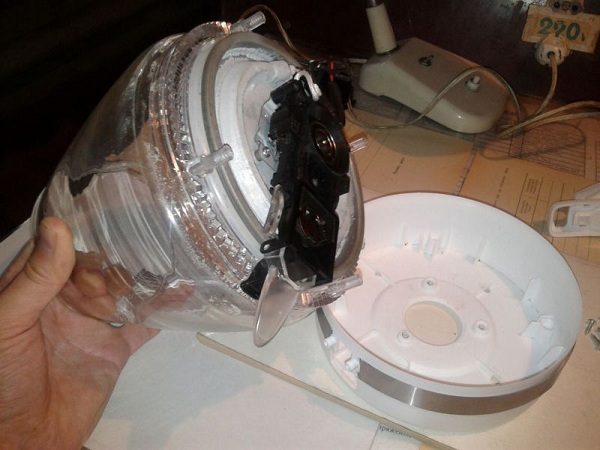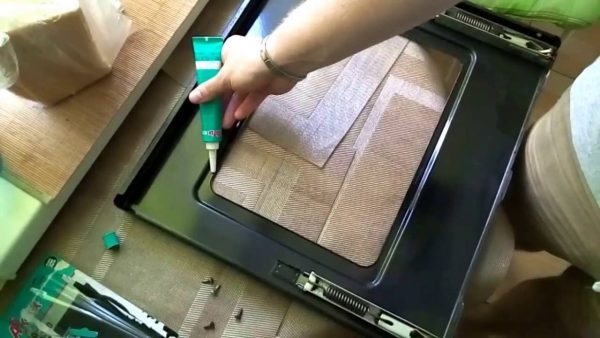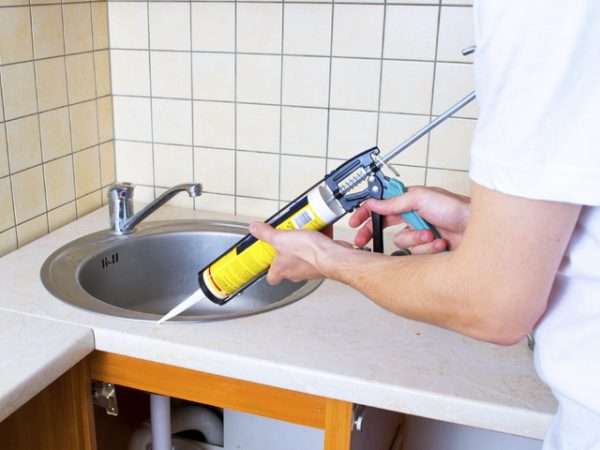Silicone sealants are very popular in the household. They are suitable for outdoor and indoor use, easy to use, reliable and durable. For gluing products in contact with food, it is recommended to use a special food sealant - a material that does not contain concentrated, corrosive components and is compatible with most substrates.
- Properties and specifications of food sealant
- Composition of ordinary and food grade silicone
- How to distinguish fake silicone
- Silicone Food Sealant Recommendations
- The use of food grade silicone
- Silicone cookware
- Silicone molds
- Silicone molds for freezing
- The use of silicone to repair glass electric kettles
- The use of sealant in the assembly and repair of kitchen appliances
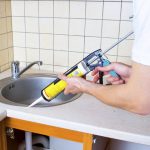
Properties and specifications of food sealant
In appearance, food-grade silicone sealant resembles a colorless transparent or white matte paste, which is easily squeezed out of a tube and freezes after contact with moisture from the air at different time intervals (depending on brand, composition). The main difference between the material and other silicone sealants is its safety for health, the absence of harmful impurities and the release of toxic substances from high temperatures. It is these properties that make the tool suitable for dishes, food equipment, ovens, household appliances.
Most often, these sealants are used for such purposes:
- filling seams in containers with water, filtering devices, tanks;
- strengthening joints, gaps at facilities in the food industry, dairy farms, slaughterhouses, catering establishments;
- sealing joints of the pipeline for the supply of warm, cold water in the city, in the countryside;
- sealing of various surfaces in institutions where sterility is required (operating rooms, other rooms of hospitals);
- repair of home and professional household appliances: gas and electric stoves, electric kettles, crock-pots, moonshines, etc.
The sealant can be applied without dripping, displacement on any substrate: horizontal, vertical. After polymerization, the seam turns into durable silicone rubber, which is food-safe and can come into contact with water and food. On the packaging, the sealant must have the mark “with approval for use in the food industry”, which confirms its non-toxicity.
Most food sealants are high-temperature (heat-resistant), which means that they can be used to repair heated products without the risk of loss of properties or destruction of the seam. Sealants are waterproof, excellent adhesion to glass, ceramics, metal, hard plastic, enameled and painted materials. The joint created by the sealant does not respond to the influence of alcohols, cleaning products, fats and oils. It is elastic and does not crack from freezing.
Technical characteristics of high-quality silicone sealants are as follows:
- high mechanical resistance, the ability to stretch when cracks form on the main product;
- significant chemical resistance, ability to withstand the effects of weak acids and alkalis;
- wear resistance, exposure to atmospheric factors;
- the ability to quickly form a protective film (after about 10 minutes) and fast final drying (from 2 hours to a day);
- tolerance of temperature drops from -40 to + 180-350 degrees or more.
The most popular brands of food sealants are Tytan “Foodproofing Silicone Sealant”, Gebsicone Mastic silicone, Master Sil and others.
to contents ↑Composition of ordinary and food grade silicone
There is an opinion that silicone is completely safe, therefore it can be used for making dishes. All silicones are a type of artificial rubber, belong to the group of polymers based on silicon atoms, through which organic groups join the inorganic silicon-oxygen chain. Silicone can be one- and two-component; in order to cure the latter, a special hardener is additionally required.
The specific properties of silicone vary depending on the length of the main molecular chain and the type of organic side groups. The food grade silicone has a strictly defined composition and differs from the others in special additives that give it heat resistance, prevent destruction from constant contact with water and food. Before buying silicone products, you need to make sure that they can be exposed to heat and are non-toxic. Otherwise, silicone is not suitable for use in the kitchen.
to contents ↑How to distinguish fake silicone
Quality food grade silicone is 100% safe for health. It is manufactured taking into account the requirements of GOST, other regulations on modern technologies. On the market there are not only really worthwhile products made of silicone, but also a large number of fakes. Here are the main signs by which they can be distinguished:
- dubious packaging;
- unpleasant odor;
- lack of description in Russian;
- white veins, noticeable at the break;
- too low price.
It is best to purchase silicone, which is CE marked on the packaging, it reflects the material's compliance with European standards. If silicone items have been tested and approved for sale by the U.S. Food Safety Authority, they will be marked with the FDA.
to contents ↑Silicone Food Sealant Recommendations
Before buying a sealant, it is important to make sure that it is suitable for a particular type of material: it is well compatible with them and has a high degree of adhesion. After that, it is necessary to make high-quality preparation of the object to be sealed. The procedure is as follows:
- Elimination of pollution. Seams clean, remove any dirt, dust, foreign particles that will reduce the adhesion of the sealant to the surface.
- Degreasing. To remove stains of fat, oil before applying sealant, use alcohol or acetone. These same solvents are suitable for cleaning solid substrates with a smooth surface.
- Grinding. This cleaning method is used for porous objects before applying sealant. Used manual cleaning with sandpaper, steel brushes or machining with a grinder.
Immediately before working with the sealant, you must make sure that the base is completely dry, and the room temperature is not lower than +5 degrees and not higher than +40 degrees. For a more accurate and convenient application of sealant, you can pre-glue the edges of the seam with masking tape, which is then removed.
After making the sealing layer of the desired thickness, it should be allowed to dry without the use of any drying accelerators. After a day, the sealant layer is polished, cut-out areas are cut off, if necessary. Cleaning the tool from the sealant is done with white spirit, acetone, ethyl alcohol, combining with mechanical scraping.It is not recommended to use silicone-based sealant on marble, granite. On zinc, copper, elastomers, a test should first be carried out on an inconspicuous area.
to contents ↑The use of food grade silicone
Silicone is widely used for the manufacture of products for the kitchen and home. They can both cook and store, freeze food.
Most sealants are packaged in 280-335 ml cartridges designed for insertion into a special gun. Also on sale are sealant tubes of 30-100 ml, which are used for a small amount of work.
Silicone cookware
A variety of dishes, kitchen accessories are now made from food-grade silicone. Mistresses use rolling pins, rugs for dough, colanders and even double boiler. Silicone has a lot of positive properties:
- safety for the body;
- hypoallergenicity;
- lack of oxidation, toxic fumes when heated;
- convenience of storage;
- ease of washing;
- long service life, non-abrasion resistance;
- elasticity, lack of slip.
From food-grade silicone do oven mitts, coasters for hot pots, pans. They reliably protect the surface of the table from damage, the appearance of spots, reduce the risk of burning hands.
to contents ↑Silicone molds
Baking dishes are very popular among housewives. Molds made of food-grade silicone are indispensable for baking: they have excellent non-stick properties, they can even not be oiled. It is very easy to get cakes and pies from such forms, because silicone is flexible, elastic. If necessary, molds can even be turned inside out.
Silicone molds are odorless, because all products prepared in them retain their natural taste. It’s easy to wash them: you can fill the product with water, then rinse or treat with a soapy sponge and rinse. Molds are considered universal, because they prepare not only pies, but also bake meat, vegetables, fish, make puddings, pastille. Here are tips for more convenient use of food grade silicone molds:
- pour the dough, lay the products, if the form is already standing on a baking sheet, otherwise because of its softness it will be difficult to carry it to the filled oven;
- lubricate the surface only once - after purchase and first washing;
- as you are ready to let the product stand for several minutes and only then remove it;
- To clean the form of burnt food, do not use sharp objects, but take a wooden spatula or pour water on the product.
Silicone molds for freezing
In molds made of silicone, you can also freeze food: jelly, desserts, jellied meat. They do not deteriorate from the effects of low temperatures, are suitable for freezing ice, as well as for long-term storage of products. It’s not difficult to get food out of silicone molds; you don’t need a knife or other tools for this.
The use of silicone to repair glass electric kettles
As a result of a fall, shock, a sharp temperature drop, the glass of household appliances may burst. Food-grade silicone sealant is well suited for the kettle, which allows for easy repairs. It is advisable to choose a colorless composition that will be invisible on the device. The procedure is as follows:
- wash the cracked area with soapy water;
- clean the base with acetone or alcohol, dry;
- apply a thin layer of sealant to the crack from the outside;
- wait until completely dry.
to contents ↑To evaluate the result, boil the water in the kettle three times: if there is no leak, then the work is done reliably. When the device flows from below, the bottom will have to be removed by unscrewing the screws, remove the seal and heating element, find the place of damage. Sealant should be applied to this area, wait until it solidifies, then reassemble the kettle.
The use of sealant in the assembly and repair of kitchen appliances
For repair, assembly of stoves, hobs and other kitchen appliances, food sealant can also be used. It is important that it has heat-resistant properties (withstands heating to a minimum of +250 degrees), is distinguished by strength, a high degree of adhesion, and moisture resistance.
Before use, the surface should be thoroughly cleaned of dirt, grease, dust and dried. After you need to apply the composition in a continuous line, smooth with a spatula. Traces of sealant must be removed immediately with a wet rag, then they will have to be scraped off mechanically. It is advisable to choose formulations with additional antifungal properties in order to exclude the settlement of microorganisms in the joints of the equipment and to maintain cleanliness in the kitchen.
Some people on the network recommend using epoxy resin, Cosmofen, BF glue, and other compounds for bonding teapots, stoves, and dishes. Such actions are prohibited! All products that do not have a mark on the permissibility of contact with food are toxic (to varying degrees). In addition, many compounds are not able to withstand the action of high temperatures, they begin to collapse immediately after heating. For repairs, only sealants with the appropriate marking should be selected.

